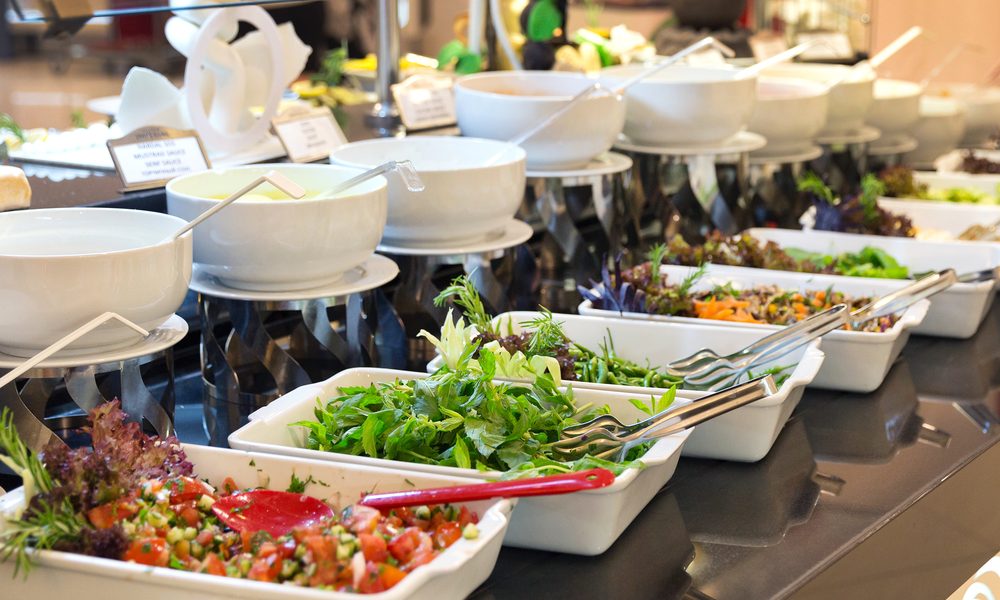The Basics of Opening a Salad Bar

Get a Food Processor
When starting a salad bar, you will want to know what kitchen equipment, salad bar equipment, is available. A food processor is one of them. It can be a great help if you are trying to save time and money.
There are a variety of models, ranging from 3-cup to 13-cup sizes. Some come with multiple attachments. They can be used for various tasks, including chopping, juicing, grating, shredding, and blending.
Most come with a sharp blade and a reversible lid. These are great for quick cleanup. You’ll need to wipe down the edges and bowl to keep them clean.
You’ll also want to invest in a vegetable slicer. This can make the preparation of a salad a breeze.
Typically, they’re made of stainless steel. This metal will hold in temperatures and hold items colder for longer.
Prepare Ice
If you’re opening a salad bar, you will need to know how to prepare ice. But ice isn’t just good for keeping ice cream chilled. It can help you keep your salads and other cold foods fresher.
Ice can come in various forms, including crushed or flaked. It can also be treated with citric acid. Treat your ice water with reverse osmosis.
To properly prepare ice, you’ll need a clean water system. A reputable ice supplier should offer you a certificate of analysis.
An excellent way to prepare ice is to place it in an indented pan or container. This helps hold it in place and ensures the ice won’t melt. Another cool trick is to fill the indented area with crushed ice.
Select a Display Fridge
Commercial food serving establishments require practical and versatile salad equipment to operate successfully. Reach-in refrigerators are a great choice if you’re looking for a reliable cold food storage solution. They come in various sizes and styles and can be tailored to suit your business needs.
Commercial deli display fridges are ideal for showcasing fresh seafood and other chilled deli items. Displaying your deli products in a slick and appealing way can tempt customers to buy more.
There are many types of deli fridges, with capacities from 200 liters to 2000 liters. Choosing the best refrigerator for your deli is essential since it can impact your sales. Consider the type of glass used, too. Stainless steel is enduring and straightforward to maintain.
Consider purchasing a sneeze guard to prevent cross-contamination. In addition, a thermal door can reduce the risk of shattered glass.
Assemble a Tile System
Putting together a snazzy salad bar has to be a top priority for any food service operator. Aside from keeping your guests occupied with the requisite hors d’oeuvres, a well-thought-out bar can be a great way to cater to a wider variety of palates. The most efficient and eye-catching way to do this is by installing a good quality tiled system.
There are many options, with some operators opting for a stainless steel or aluminum-based portable bar system. These aesthetically pleasing units come in various colors to complement the decor. Some operators opt to install their bars in the back of the kitchen, allowing for greater flexibility, which is particularly handy in a busy restaurant.
Another option is a tiled salad bar. Fortunately, these units are surprisingly affordable and can be installed by anyone, even novices.
Conduct Market Research
If you are considering opening a salad bar, it is vital to perform market research. It helps you identify your competition, your target customers, and how you can attract them. This will help you develop a unique approach to your business.
Salad bars are becoming increasingly popular because of the growing demand for healthier food choices. These types of businesses can be very profitable. You’ll have to determine whether you want to join a franchise or open an independent restaurant. The choice you make will have a significant impact on your profitability and the location you choose. A new restaurant must have an original approach to stand out from competitors.
Before selling salads, you should ensure you have enough space to operate. You’ll need tables and seating for customers. Also, you’ll need space for ingredients and equipment. You’ll also need to calculate how much it will cost to set up your premises.




